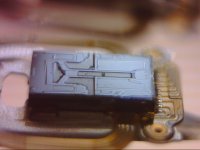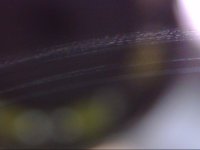I am doing some experimenting with platter cleaning and found this post very useful. I have taken the 'plunge' and purchased some HFE 1700 which will be here next week. I know the jury is out with this product, but I am guessing I can use it for liquid damaged phones if not successful. In the meantime I have been experimenting with 99% Alcohol. I am contaminating single platter drives with fingerprints and seeing which product works best both in terms of cleaning and leaving residue. Having single platters allows me to assess both surfaces after the clean.
I have just put a single platter WD in a sonic cleaner with 99% and results were pretty good. Small amount of residue in the platters but fairly easy to clean off. Drive spun up and read without an issue. Took the heads back out and no residue left on the heads, so I presume this method seems pretty good.
I have also been experimenting with Dai's method of cleaning platters by cleaning the heads, installing them and removing them and cleaning them again. I had a drive which had platter damage but the client did not go ahead so it was a good experiment. This was a single platter Seagate 7100.10 with a score near the spindle but only on side 0. Head 0 was contaminated (no surprise). I cleaned it with 99% and put the same heads back in the drive. Did this a few times to clean the dust off the platters. Previously the terminal just gave junk on spin up, but after the third clean it recorded SATA Reset in the terminal but did not come live. So I can presume the cleaning did have some effect even with physically damaged heads. I have a new set of heads arriving to continue the testing.
More when I get the HFE.



